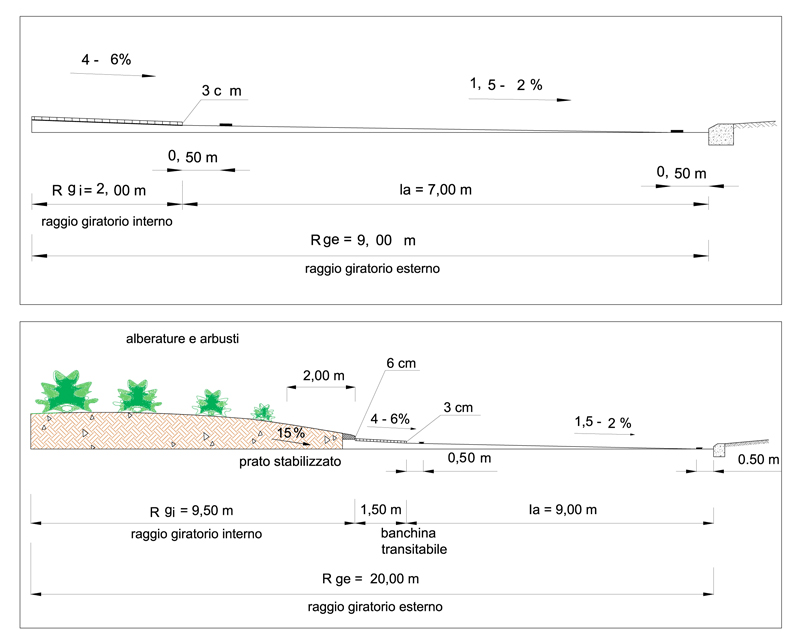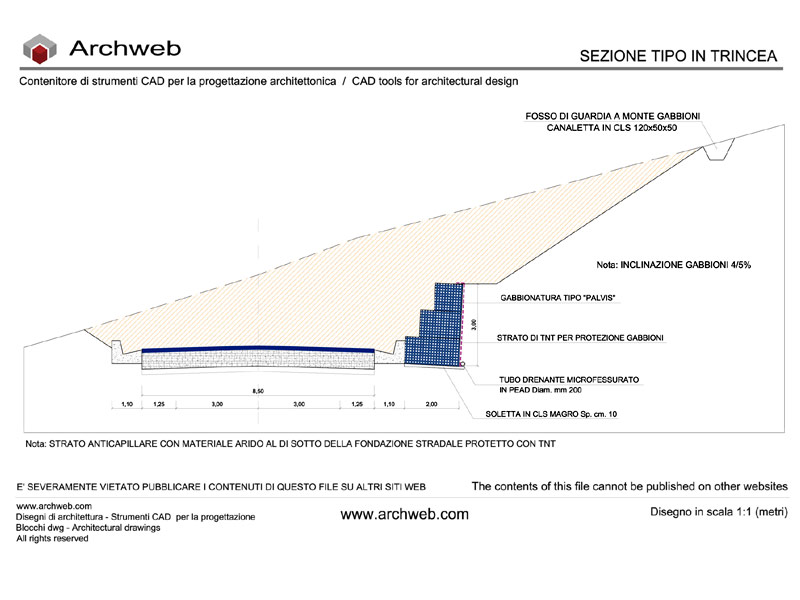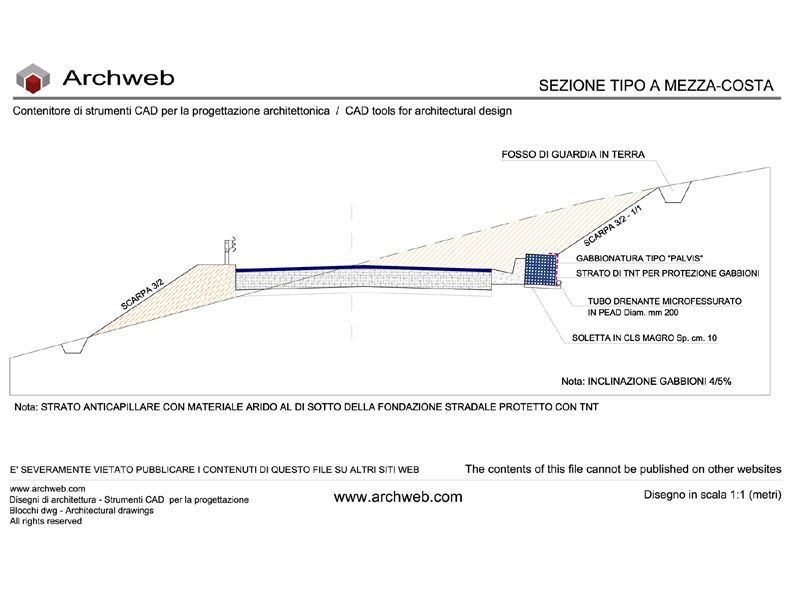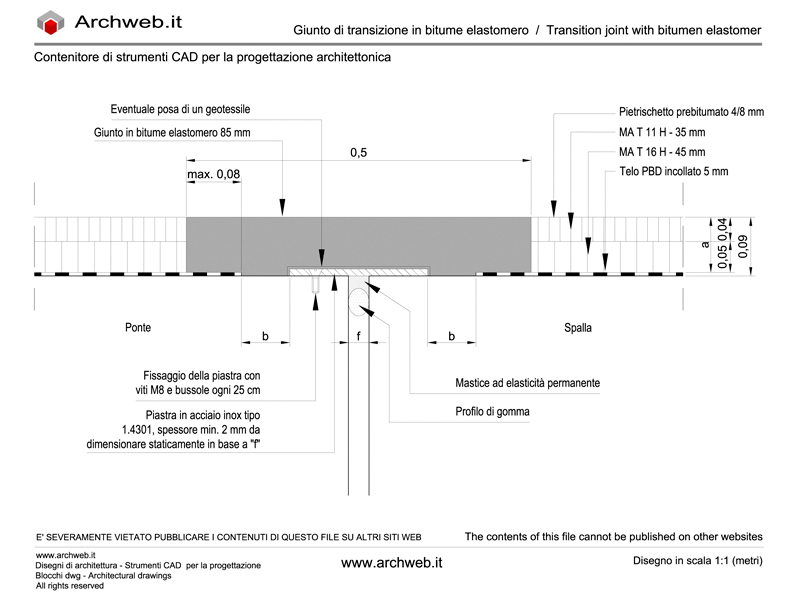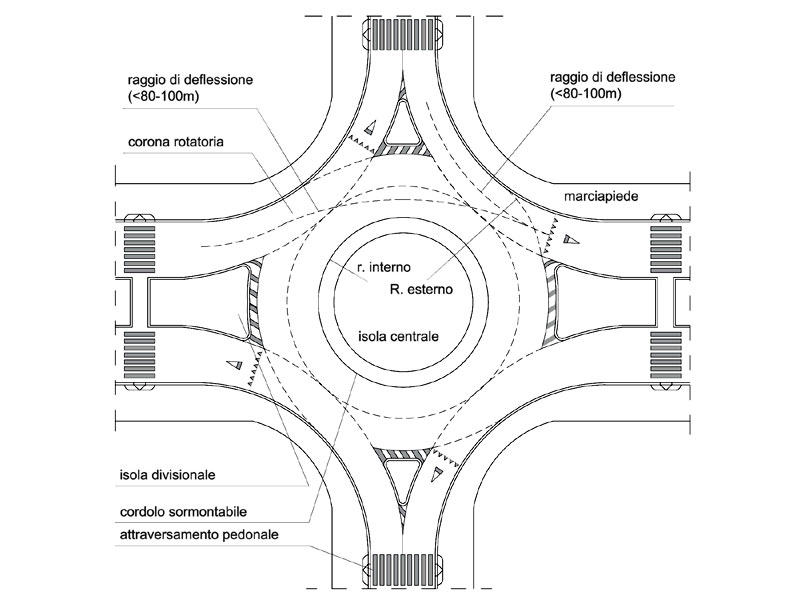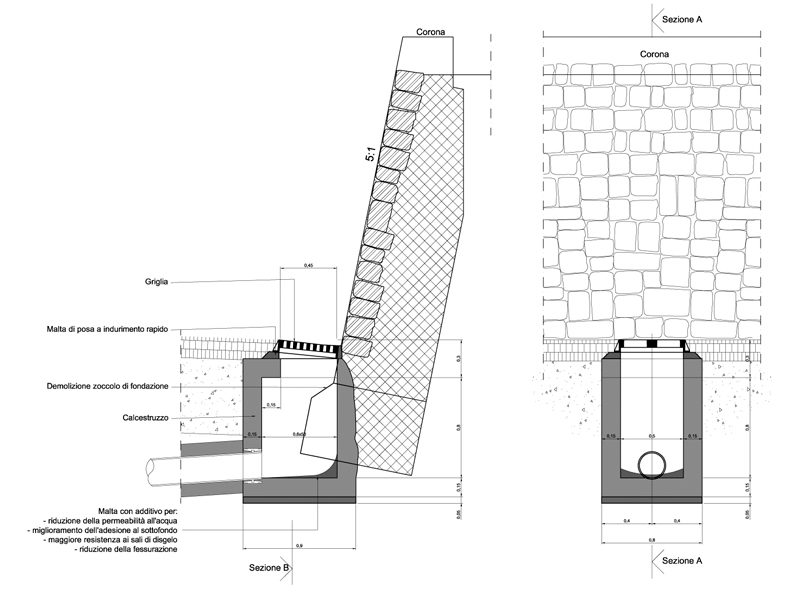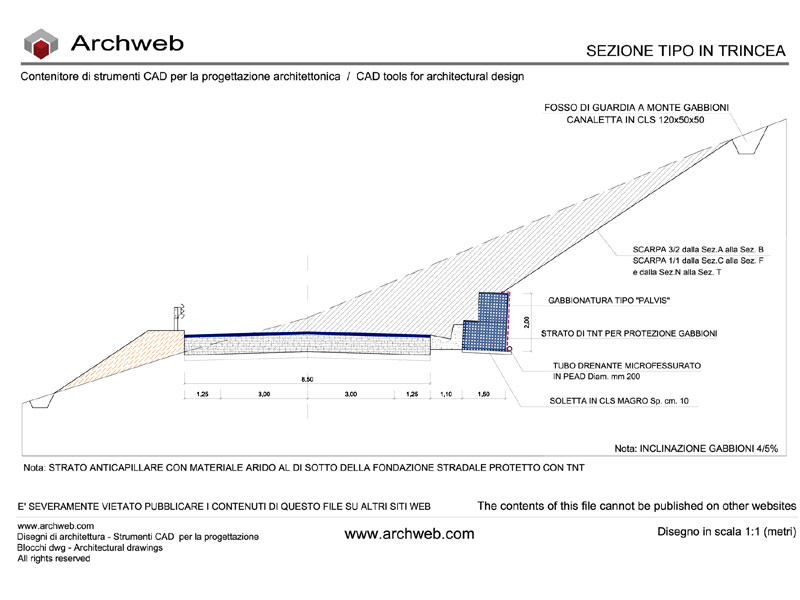Subscription
Roundabouts sections
Scale 1:100
Slopes and rainwater drain
In order to ensure the best efficacy of the drainage of rainwater, the slope of the annular carriageway in the mini-roundabouts must always face outwards (slope 1.5-2%). This solution is also recommended for compact roundabouts, while for roundabouts with a diameter of> 50 m, an inward slope (1.5-3%) is recommended.
If you opt for a slope towards the interior, an adequate rainwater collection system must be set up by appropriately sizing the wells along the inner edge of the ring.
As regards the maximum slope between two external diametrical points of the turning crown, this value should not exceed 6%.
The central island should always be circular. Roundabouts are tolerated even with non-circular central island if this configuration is imposed:
the need to optimally insert an additional arm;
from the boundary conditions (existing urbanized), but in this case a study of the capacity is required to verify the feasibility of a roundabout with a smaller diameter and a circular central island.
The presence of a hill on the central island is strongly recommended as it allows a greater perception of the roundabout and guarantees lower entry speeds due to the incomplete visibility over the entire intersection area. However, the visibility criteria set out in chapter 3.A.5 must be respected. The slope of the hill cannot be higher than 15%.
It is necessary to maintain, as already mentioned in chapter 3.A.5, a crown free from any type of visual obstacle (shrubs, …) of a width equal to 2 m measured starting from the inner edge of the crown that can be surmounted or from the peripheral edge of the central island (in the case of roundabouts with insurmountable central island).
As regards the specific cases of roundabouts with central islands partially or totally surmountable, it should be noted that:
– partially surmountable central island: the internal ring or surmountable crown, of lis width varying between 1.5 and 2 m, must be raised from the ring road to allow only heavy vehicles to overcome it (or to other vehicles only in exceptional cases )
through a 3 cm step and made with different materials than the ring road. The slope of the surmountable strip must normally be between 4 and 6% and, in any case, must not be greater than 10%. The insurmountable part
of the central island must however have a minimum radius of 3.5 m.
– central surmountable island: it is preferable, rather than the use of horizontal signs only, to create the central surmountable island with a slope of between 4 and 6% and with different materials than the ring road.
Recommended CAD blocks
How the download works?
To download files from Archweb.com there are 4 types of downloads, identified by 4 different colors. Discover the subscriptions
Free
for all
Free
for Archweb users
Subscription
for Premium users
Single purchase
pay 1 and download 1





























































